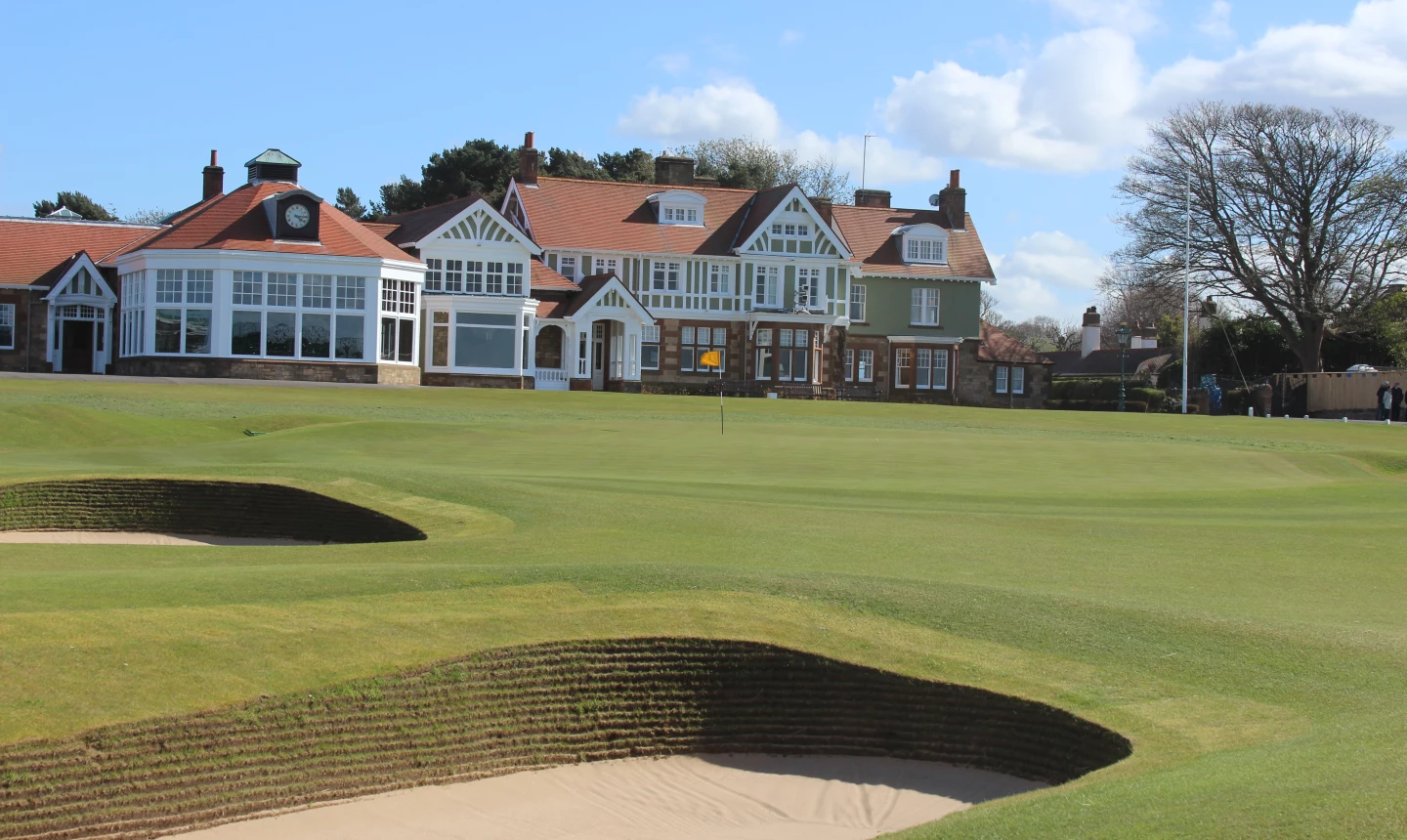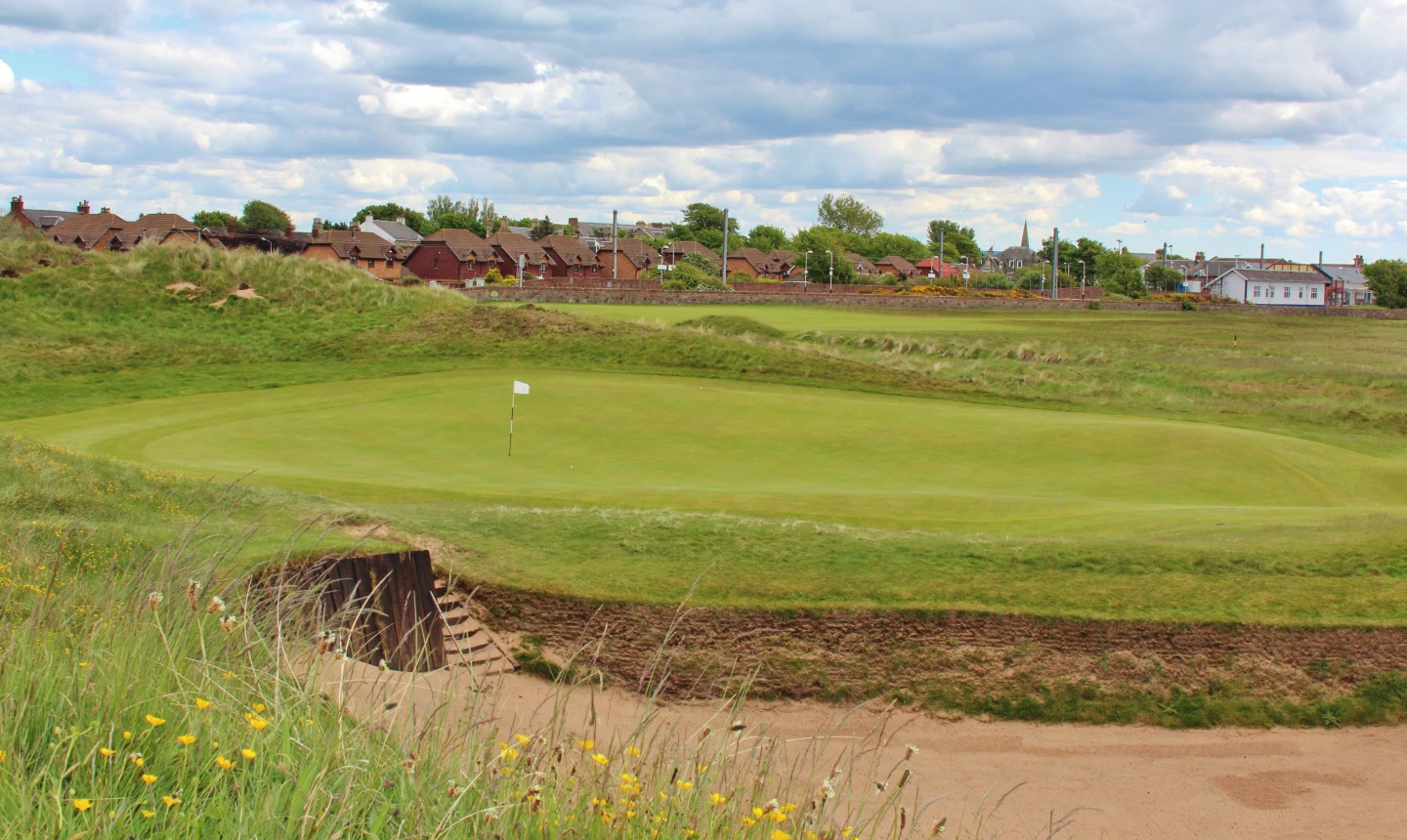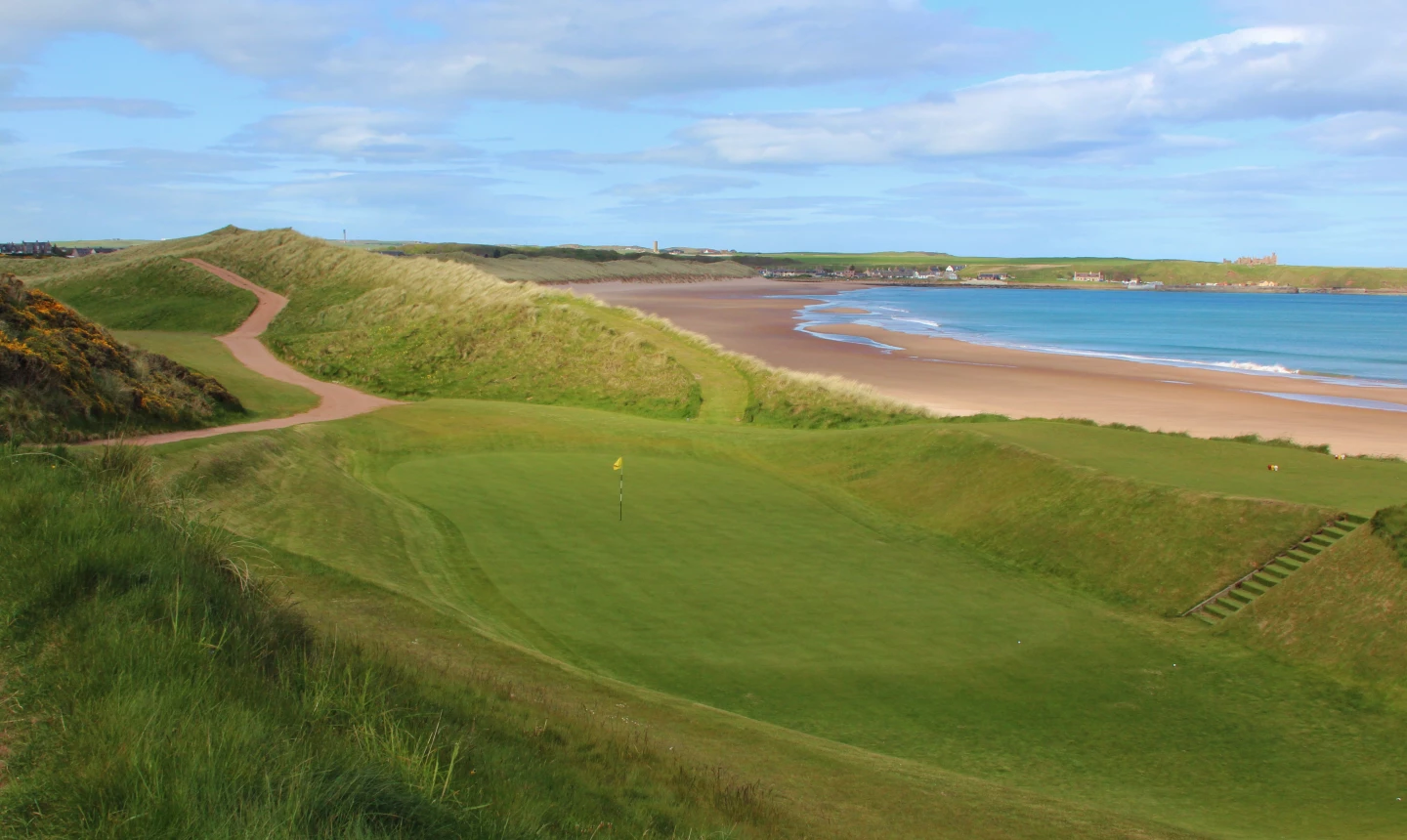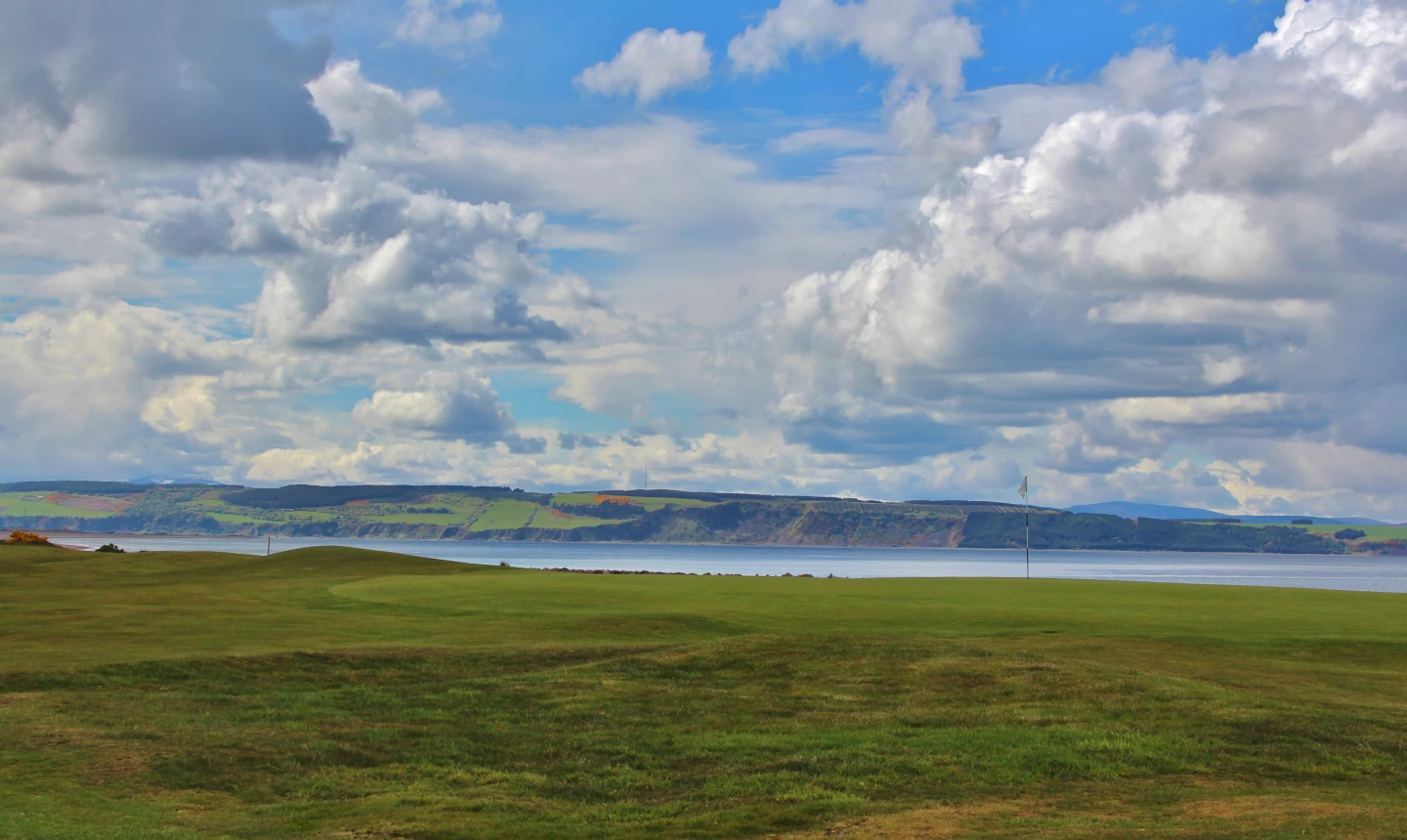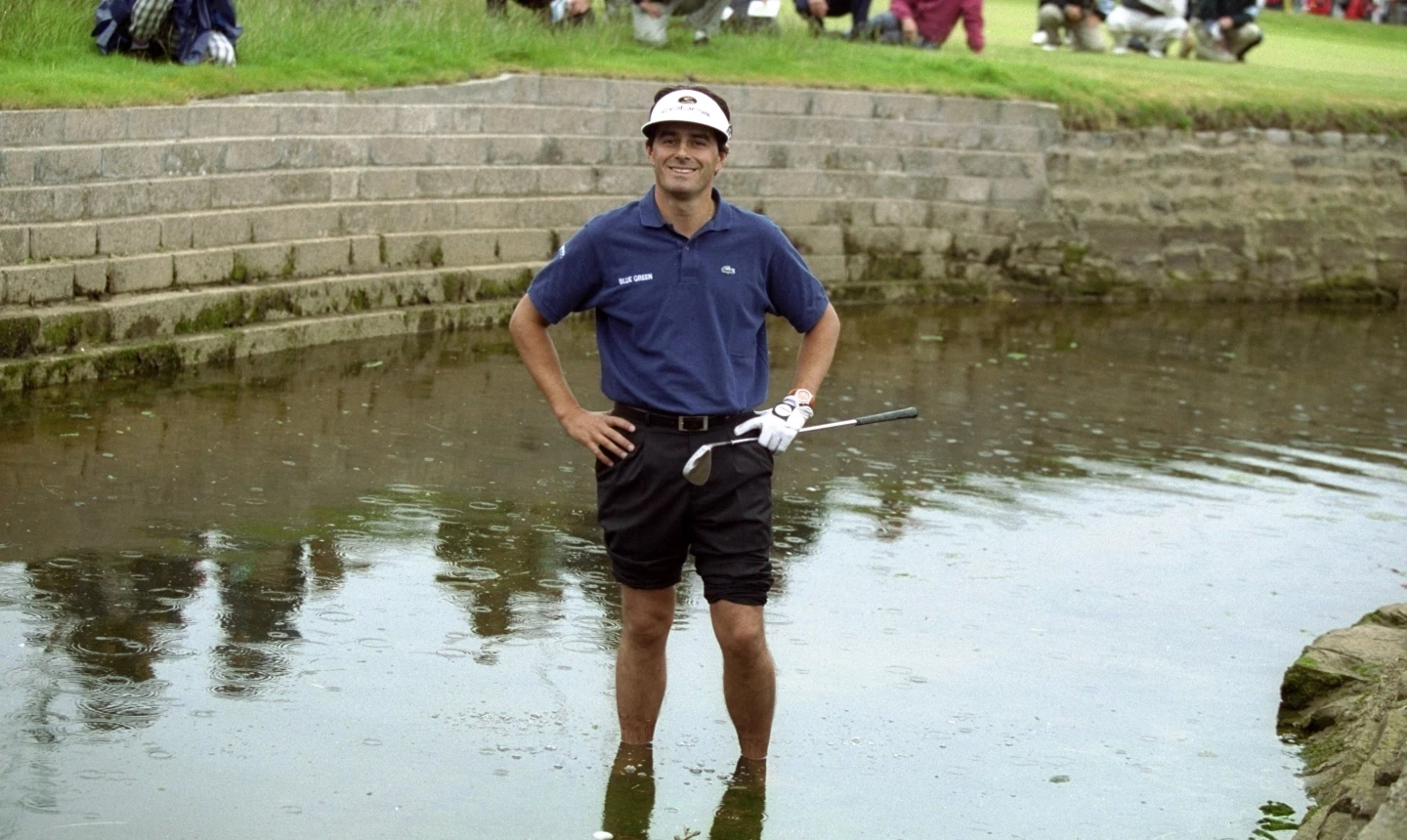You could make an argument that Old Tom Morris is the greatest golf course architect who ever lived.
Morris was born June 16, 1821, in St. Andrews, Scotland. Until his death in 1908, his achievements as a player, greens keeper and architect helped usher in the era of golf going global.
Morris was influential in launching the Open Championship in 1860, eventually winning four times as a player. As the keeper of the greens at Prestwick Golf Club and later the Old Course at St. Andrews, he is credited with creating innovative maintenance practices such as topdressing greens with sand.
He designed many of the greatest golf courses in Scotland and worked in England, Wales, Ireland and Northern Ireland as well.
Critics point to the fact that he only "staked out" his routings, putting stakes in the ground where tees and greens were located. He's credited with influencing about 60 courses, all of them altered over the last century. Some, thankfully, still bear his best holes.
In honor of his 197th birthday on June 16, 2018 -- acknowledged on Twitter as #TomMorrisDay -- let's tip our cap to Old Tom, acknowledging his influence on 10 of the best links courses in the world.
Nairn Golf Club, Inverness, Scotland
Archie Simpson, the Professional and Keeper of the Green at the Royal Aberdeen Golf Club, originally laid out Nairn Golf Club, founded in 1887. Morris totally revised Nairn and extended it westward several years later. James Braid, however, probably deserves the most praise for Nairn's masterful routing along the Moray Firth in the Scottish Highlands. The first seven holes roam directly along the water, often into a stiff gale. Nairn, host of the 1999 Walker Cup and 2012 Curtis Cup, is easy to walk. It's even easier to enjoy its fantastic conditions and a friendly welcome from the club.
Championship Course at Royal Dornoch Golf Club, Dornoch, Scotland
Nearly a decade after Royal Dornoch Golf Club was founded in 1877 along the beautiful Dornoch Firth, Morris "updated" the original nine holes in 1886. He came back three years later to extend the par-70 links to 18 holes. Morris introduced the plateau, inverted-saucier greens that are the soul of Dornoch. They inspired Dornoch native Donald Ross at Pinehurst No. 2 in America. Morris' green sites like the fourth, 14th and 17th anchor what some consider the best links not on the Open rota. Dornoch earned royal status in 1906. Some of the original holes by Morris eventually ended up on the more playable Struie Course next door after George Duncan introduced the dramatic new stretch of holes 6-11 around the time of World War II.
Old Course at St. Andrews, St. Andrews, Scotland
Morris didn't design the Old Course at St. Andrews -- some believe golf was played on the site in the 12th century -- although he certainly left his mark when he was hired by the R&A in 1864 as the keeper of the greens. He built a new green on the first hole beyond the burn and enlarged the famous 18th green just beyond the "Valley of Sin." He widened fairways to handle increased play and establishing separate teeing areas on each hole. The historic links along the Eden Estuary hosted its 29th Open Championship in 2015. Morris was also responsible for the initial design of the New Course in 1895 and Jubilee Course in 1897. Thousands of golf fans pay homage to Morris by visiting his grave in St. Andrews each year.
Royal County Down Golf Club, Newcastle, Northern Ireland
Morris was paid a modest sum to extend a recently built nine-holer into a full routing in 1890. Tweaks by Harry Vardon, Braid and Harry S. Colt caused more evolution from 1908 on through the golden era of course architecture. In modern times, British architect Donald Steele added a new drivable par 4 in 2004 specifically for match play. Royal County Down Golf Club hosted the dramatic 2006 Walker Cup featuring a multitude of stars like Rory McIlroy, Dustin Johnson and Rickie Fowler. Professional championships have ranged from the 2000-2002 Senior British Open to the 2015 Irish Open. Royal County Down's magical setting along the Bay of Dundrum in the shadow of the Mountains of Mourne bathes golfers in beauty when the purple heather and yellow gorse on the dunes blooms. With five blind tee shots in the first 11 holes, taking a caddie remains the only way to survive the immense challenge at Royal County Down.
Old Course at Prestwick Golf Club, Prestwick, Scotland
Morris moved his young family to Prestwick on the west coast of Scotland in 1851. He laid out and cared for the original 12-hole course at Prestwick Golf Club. The final six holes were added in 1883, well after Morris returned to St. Andrews in 1864. Six of his original greens are still in play. Prestwick's 24 Open Championships from 1860 to 1925 are still second-most behind the Old Course at St. Andrews. It's too short to host a modern Open, and its blind shots would drive spoiled PGA Tour pros crazy. Don't try to play Prestwick without a caddie or a member. After the opening hole along the railroad, the layout becomes a maze too tough for first-timers to solve, especially the famous blind green on the "Alps" hole, the 17th.
Muirfield, Gullane, Scotland
Morris originally staked out Muirfield as a 16-hole routing in 1891 along the Firth of Forth as the home for the Honourable Company of Edinburgh Golfers, the oldest society of golfers in the world. Two holes were added soon after. In 1928, revisions made by Tom Simpson and Colt transformed Muirfield into the fairest and most respected links on the Open rota. Muirfield only allows visitors several tee times on certain days of the week, so those who want to play need to book early. Don't forget to pack the jacket and tie. Golfers won't get into the clubhouse without one.
Machrihanish Golf Club, Machrihanish, Scotland
The 1879 alterations made by Morris to the Kintyre Golf Club were so good that members changed the club's name to Machrihanish Golf Club soon after, in 1888. Machrihanish, set at the remote southern tip of the Kintyre Peninsula, wends its way through magical dunes, especially on the front nine. The fairway of the first hole -- "The Battery" -- runs diagonally away from players, forcing a brave "bite-off-as-much-as-you-can-chew" swing off the first tee to carry the beach. It's unfortunate that several original holes on the back nine were altered later to accommodate the adjacent airport.
Old Course at Lahinch Golf Club, Lahinch, Ireland
There's a reason Lahinch Golf Club's Old Course is so revered. It's the only course touched by Morris and Dr. Alister MacKenzie. In 1894, Morris improved a course laid out by three locals from Limerick by putting the dynamic natural dunes more into play. In 1927, MacKenzie moved several holes closer to the Liscannor Bay and shaped wildly undulating greens. Martin Hawtree restored MacKenzie's greens and added new tees and several new holes in 1999 to revive this classic links. Thankfully, the quirky but cool Klondyke and Dell holes have endured time. A flag man situated atop the dune directs traffic on the Klondyke hole, the short par-5 fourth hole ending at a blind green. Golfers must execute another blind shot over dunes on the Dell hole, the par-3 fifth hole. This two-hole stretch best exemplifies the whimsical, creative side of Morris as an architect.
Championship Course at Cruden Bay Golf Club, Aberdeen, Scotland
Blind holes and remarkable dunes highlight this quirky links originally designed by Morris and Archie Simpson for a Scottish railway company in 1899. The 6,287-yard Championship Course at Cruden Bay Golf Club (later reworked by several architects) tends to win over fans for its "fun" factor. Three holes -- the dramatic ninth and 10th, set upon a towering dune ridge, and the 16th -- have been altered within the past five years, earning high praise from even skeptic club members.
Championship Course at Carnoustie Golf Links, Carnoustie, Scotland
Once again, it is the combination of Morris and Braid that created the treacherous links nicknamed "CarNasty." Golf has been played on the site since 1527. Morris transformed a 10-hole routing built by his mentor, Allan Robertson, in 1850 into 18 holes somewhere around 1870, according to the club's website. Braid's efforts in 1926 created a links tough enough to host seven Open Championships. The Barry burn, in play on the final three holes built prior to the 1937 Open, will forever haunt Frenchman Jean Van de Velde's dreams. Carnoustie Golf Links will host its second Senior British Open in 2016 and another Open Championship in 2018.
Editor's note: Morris is also credited with some other fantastic links, such as Dunbar Golf Club, Tain Golf Club, Balcomie Links at Crail Golfing Society and Royal North Devon Golf Club. His original routing at Royal Portrush Golf Club in Northern Ireland was replaced when Colt was given better dunes land in 1929 for what is now the famed Dunluce links.








 Back
Back





